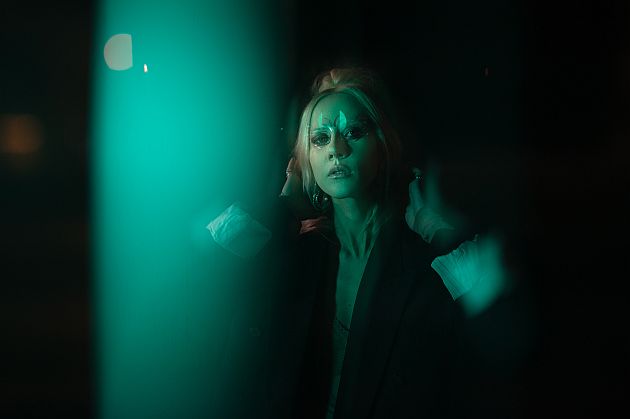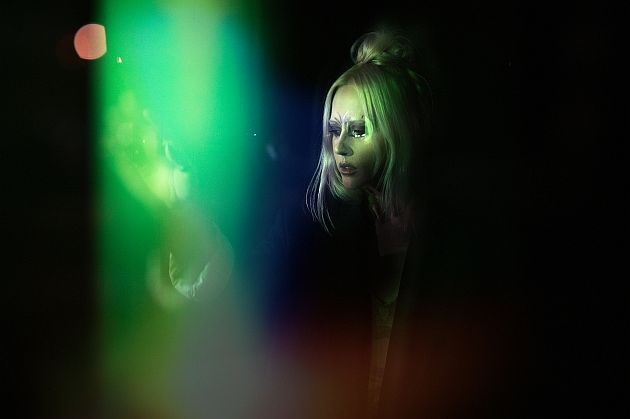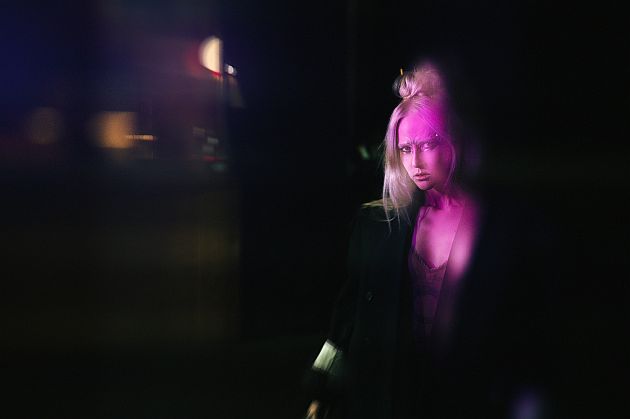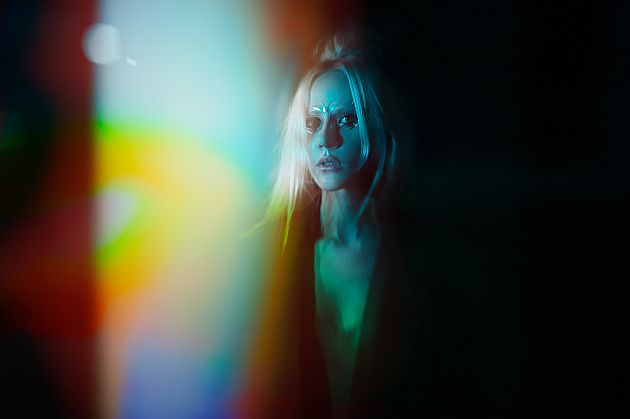 Interview with
Interview with Kadri Sammel (vocals) from Bedless Bones
Kadri Sammel, an exceptionally original artist who navigates the boundaries of various art forms, is the visionary behind the BEDLESS BONES project. As a composer, photographer and visual artist she crafts beautiful and mysterious worlds that continue to captivate. Once again, Sammel astounds with her latest album, ‘Mire of Mercury’. This masterful puzzle intricately weaves together philosophical, sonic, and expressive images. The amalgamation of these elements creates a vibrant atmosphere, guiding the listener on a journey that inspires deep contemplation while also providing sheer delight. Join us for an exploration of the new album, delving into themes of order, chaos, life, death, and other profound matters with Kadri Sammel.
Reflections of Darkness [RoD]: Hi Kadri, thank you for finding time for the interview and first of all congratulations on the new release, it’s a true masterpiece. My first question after listening to ‘Mire of Mercury’ is - if you were to choose only one form of communication - images, words, or sounds - which one would you pick?
Kadri: No! This is impossible. I have periods of time when one of them is more in the focus when it comes to art, but the other ones never disappear completely. If one of my senses should go, I would have to give something up, but otherwise it’s not happening. Sound is probably not the one I would miss the most though, being dumb, deaf and blind.
RoD: Regarding the music of BEDLESS BONES, which appears to primarily focus on the sonic layer, could you elaborate on the major emotions and states that you aim to convey with your music, especially in relation to the new album?
Kadri: I’m always looking for nuance in the condition, I’m not that much relating to strong monochrome emotions as I’m not a very reactive or hyper emotional person, I’m observing and analysing and trying to find new ways to see things. ‘Mire of Mercury’ is a flood-land of minor, not major, I think, tonally speaking. It’s actually a very bright and positive album for me, emerging from a dysthymic state, making peace, at least partially, with certain aspects of myself, and all that good stuff. Somewhat ironically the album starts with a song called ‘Dead Woman’, but that is a shade in the spectrum - you have to look into the darkness of your soul sometimes, and bury the dead.

RoD: When contemplating the role of art in your life, would you perceive it more as a shelter or a space where you experience complete freedom? Whether through music, video, or other artistic forms, what purpose does art serve in your life?
Kadri: I’ve always had one art form or the other be a part of my life and daily activities. And now I’ve tried to arrange everything so that it’s pretty much the central part and it’s very natural, to create and to enjoy creation. I don’t put on my artist pants and start creating art at a certain time, it’s very much intertwined with my other activities. I get anxious when I haven’t had the chance to create something for a while.
RoD: In your opinion, should art be politically or socially engaged?
Kadri: It can be, and a lot of good art is. But I’m all for the “l’art pour l’art” approach too. An artist must have courage to follow their heart’s true desire, follow their purpose. And be prepared that nonpolitical work can also be considered political.
RoD: Reflecting on ‘Bending The Iron Bough’, your second album released in 2021, my personal impression is that you have made significant progress. In what ways do you feel you have changed during these two years, both as an artist and as a person?
Kadri: I always value my work more when I have been able to do exactly what I wanted and didn’t give in to outside pressure or people’s advice about how to be more successful. Maybe I’m just stubborn and working against myself in a way. To me, ‘Bending the Iron Bough’ was my biggest success in terms of it being 100% pure in aligning with my inner drive. And I was fully aware that I would lose some listeners with it, but I did it anyway. I don’t think progress is a straightforward and linear thing, there’s a lot that’s going on under the surface. Progress is also measured often with very robust instruments, and then there is the subjectivity factor.

RoD: Could you share the inspiration behind creating the ‘Mire of Mercury’ album? I’ve observed certain traits associated with you, such as the combination of ephemeral and impactful elements, contrasts, and a particular sense of gloom, melancholia maybe. What story does ‘Mire of Mercury’ convey?
Kadri: It’s difficult to summarize the story as it’s very much meant to be felt and discovered and reinterpreted. I wanted to create an album that is like a tale that one has heard before, but at the same time is very futuristic, and every chapter opens a new sensation, a new way of seeing the whole. The songs can be taken out of the context of the album and heard separately, or as a part of a union. Also, it can be listened to without paying attention to the lyrics, or looking into the lyrics for another layer of meaning.
RoD: The juxtaposition of Ambiental, ephemeral soundscapes with electronic dance beats on your album is striking. How do you go about balancing the tones in your songs?
Kadri: The ambience just seems to seep in on its own, to be honest. I’ve tried to produce some more simple dance beats in the past, but found it difficult to relate to very measured and clinical sound. If I can understand and process it all on the first listen, it’s not really interesting to me.
RoD: It seems that the album touches on themes of mortality. What is your attitude toward death, as well as aging and the deterioration of the human body?
Kadri: I mean it’s so broad… What is your attitude about life? It’s so futile to try to make it somehow succinct. We all go through these passages, and have our mortality written in our lifelines. Not paying any attention to it seems to be the worst way to go about it, but what do I know, right?
RoD: Could you share insights into the making of the video for ‘Dead Woman’? As the opening track for ‘Mire of Mercury’, it adopts a minimalistic approach with a dark colour palette and poetic elements. What was the idea and narrative behind it? What does a dead woman stand for?
Kadri: You create and bury the ‘Dead Woman’ so she is your Other and could die with your depression. The initial inspiration came from Julia Kristeva’s essay ‘Black Sun’. I’ve been wondering about the ‘Dead Woman’ so much, I almost believe I’ve read the story in a gothic poem, but I think I’m just making it up.

RoD: In the song ‘Map to the Stars’, you express, “Conditioned, disciplined / I’m afraid to be free.” Could you elaborate on what you feel the lyrics are expressing freedom from?
Kadri: ‘Map to the Stars’ comes from a memory I have from my teenage years, when I was around some very creative, talented, crazy and troubled people and the admiration and awe I felt, but also knowing that I couldn’t be too close to that. The ambiguity of those feelings and my own reservations sparked these contemplations.
RoD: Would you characterize yourself as an escapist?
Kadri: I’ve been very interested in escapist practices, alternate realities etc, especially during my studies of cultural theory. What drives the human mind to escape. I wouldn’t categorize myself as such, though, apart from the casual escape into a book or a dancehall.
RoD: The lyrics “Deal with chaos / Deal with order / Take care of your head / Conceal the burden’. Is chaos something that scares you? And is homeostasis, balance actually achievable?
Kadri: But how scary is order in comparison? Deeply rooted practices that are no longer fruitful or justified, are still difficult to break. Chaos commands to action. Homeostasis is a part of the circle. Change is always imminent.
RoD: Regarding the music layers of ‘Mire of Mercury’, were you experimenting extensively during the album’s creation? What novelties did you decide to apply to enrich your music?
Kadri: No groundbreaking new methods, just different approaches to every song. I used more samples on this album and recorded myself playing the Persian santur on ‘Homeostasis’ and ‘Solar Animus’. I did push myself a bit to let my mind go into uncharted territories, used stream of consciousness writing for lyrics and occasionally deprived myself of sleep for that sweet delirious state where associations just flow.

RoD: Having witnessed your late summer performance during NCN (and also your former concerts), your live shows seem to carry an almost magical, cathartic quality. How do you feel while performing live for the audience? Are you fully present, or do you allow the energy to carry you away?
Kadri: I have moments of disappearing, but as I don’t play with a band that would keep the music going, I cannot exactly leap into oblivion. But on stage is definitely where I reach the most altered state of mind in the sense that I am almost not me, but a part of the moment. I don’t think of myself as performing, but rather becoming a singular unit with the music and other people in the room.
RoD: Looking ahead to the upcoming months, what can we expect from you?
Kadri: Could be anything. Or nothing.
RoD: One final question: How do you envision the end of the world? Are you afraid of it?
Kadri: Not exactly afraid, but it’s not something I actively envision either. I hope the animals make it out alive.
RoD: Thank you very much for your time, Kadri!
Kadri: Thank you, Karolina, take care.
Pictures by Anders Melts




